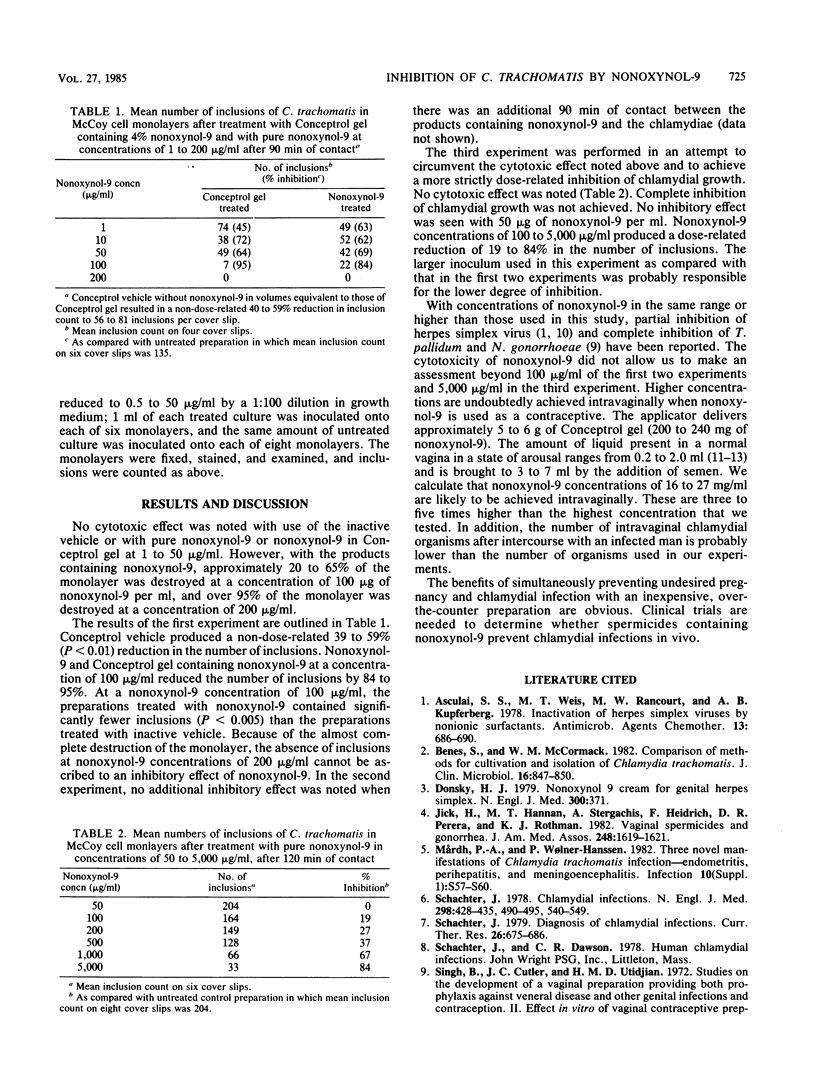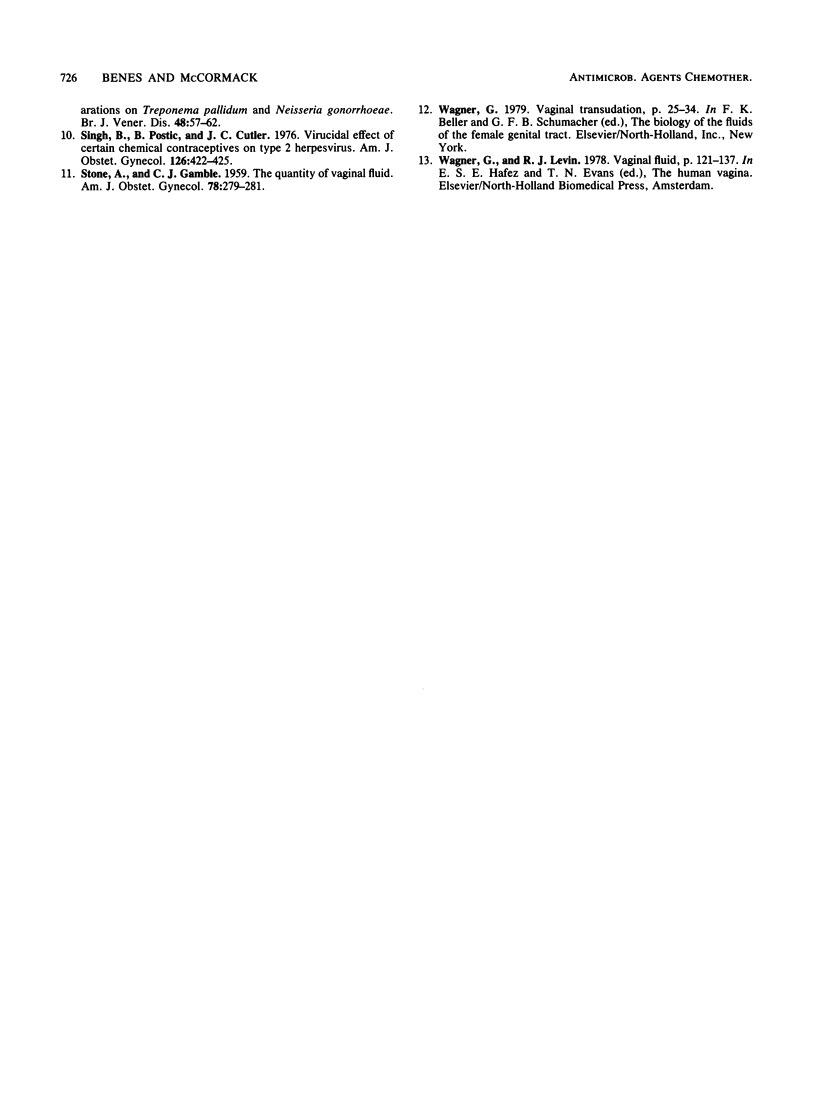Abstract
We evaluated the ability of the widely used spermicide nonoxynol-9, Conceptrol gel containing nonoxynol-9, and Conceptrol vehicle (without nonoxynol-9) to inhibit the formation of inclusions of Chlamydia trachomatis in cycloheximide-treated McCoy cells. Conceptrol vehicle produced a non-dose-related 40 to 59% reduction of the number of inclusions formed. In contrast, the addition of nonoxynol-9 and Conceptrol gel containing nonoxynol-9 at a concentration of 100 micrograms/ml reduced the number of inclusions by 84 to 95%. Prolongation of contact between nonoxynol-9 and the chlamydial organisms from 90 to 180 min did not result in additional inhibition. Using a higher concentration of chlamydial organisms and diluting the drug-chlamydia mixture before inoculation of the monolayers, we were able to test higher concentrations of nonoxynol-9. At concentrations of 100 to 5,000 micrograms of nonoxynol-9 per ml, a dose-related 19 to 84% reduction of the number of inclusions was noted.
Full text
PDF


Selected References
These references are in PubMed. This may not be the complete list of references from this article.
- Asculai S. S., Weis M. T., Rancourt M. W., Kupferberg A. B. Inactivation of herpes simplex viruses by nonionic surfactants. Antimicrob Agents Chemother. 1978 Apr;13(4):686–690. doi: 10.1128/aac.13.4.686. [DOI] [PMC free article] [PubMed] [Google Scholar]
- Benes S., McCormack W. M. Comparison of methods for cultivation and isolation of Chlamydia trachomatis. J Clin Microbiol. 1982 Nov;16(5):847–850. doi: 10.1128/jcm.16.5.847-850.1982. [DOI] [PMC free article] [PubMed] [Google Scholar]
- Donsky H. J. Nonoxynol 9 cream for genital herpes simplex. N Engl J Med. 1979 Feb 15;300(7):371–371. doi: 10.1056/nejm197902153000724. [DOI] [PubMed] [Google Scholar]
- Jick H., Hannan M. T., Stergachis A., Heidrich F., Perera D. R., Rothman K. J. Vaginal spermicides and gonorrhea. JAMA. 1982 Oct 1;248(13):1619–1621. [PubMed] [Google Scholar]
- Mårdh P. A., Wølner-Hanssen P. Three novel manifestations of chlamydia trachomatis infection- endometritis, perihepatitis and meningoencephalitis. Infection. 1982;10 (Suppl 1):S57–S60. doi: 10.1007/BF01640716. [DOI] [PubMed] [Google Scholar]
- STONE A., GAMBLE C. J. The quantity of vaginal fluid. Am J Obstet Gynecol. 1959 Aug;78(2):279–281. doi: 10.1016/0002-9378(59)90173-5. [DOI] [PubMed] [Google Scholar]
- Schachter J. Chlamydial infections (third of three parts). N Engl J Med. 1978 Mar 9;298(10):540–549. doi: 10.1056/NEJM197803092981005. [DOI] [PubMed] [Google Scholar]
- Singh B., Posti B., Cutler J. C. Virucidal effect of certain chemical contraceptives on Type 2 herpesvirus. Am J Obstet Gynecol. 1976 Oct 15;126(4):422–425. doi: 10.1016/0002-9378(76)90630-x. [DOI] [PubMed] [Google Scholar]


